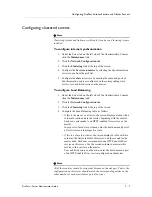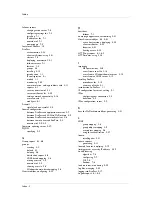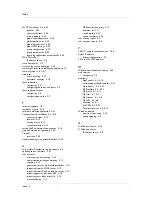
Configuring FirePass Failover Servers and Cluster Servers
FirePass
™
Server Administrator Guide
7 - 1
Using FirePass failover servers
The Failover feature provides fault tolerance and guarantees that at least one
server in a failover pair is accessible to users in the unlikely event of a server
failure. The failover pair (an active server and a standby server) provide hot,
stateful failover without session interruption or termination. If the active
server has a failure, all session data is automatically preserved. The failover
transfer process to the standby server is usually transparent to users,
although occasionally a new session initiated since the most recent
synchronization update may need to be restarted.
The active and standby servers communicate with each other using a
heartbeat. Each server can detect when the other server fails, and in case of
failure it automatically restarts applications on the operating server. The
standby server uses IP takeover to take over sessions if the active server has
a failure.
Installing FirePass failover servers
All FirePass servers are licensed initially as standalone servers. If you want
to configure a pair of failover servers, you need to obtain new licenses.
Contact your sales representative or Technical Support, and provide them
with the serial numbers of the servers to be configured as a failover pair, or
request a new license for each server by navigating to Server/Settings and
clicking the link to request a new license. For more information, see
Managing FirePass licenses, on page 5-11.
If you are installing two single-NIC FirePass servers in failover pairs,
simply connect the servers to the network.
If you are connecting two dual-NIC FirePass servers in failover pairs,
connect the same corresponding NICs to the same subnet on both servers.
For example, connect the internal NIC on both servers to the same subnet.
Note
For dual-NIC servers, the public subnet should always be associated with
the NIC configured as eth0, and the private subnet should always be
associated with the NIC configured as eth1. For more information, see
Maintaining the network configuration settings, on page 5-1.
Configuring the IP addresses for failover servers
For two single-NIC failover servers, you need at least three static IP
addresses: one IP address for the NIC in each server, and a “virtual” IP
address for the failover pair itself.
For two dual-NIC failover servers, you need at least five static IP addresses:
two IP addresses for each server’s NICs, and a virtual IP address for the
failover pair itself.
Содержание FirePass
Страница 1: ...FirePassTM Server Administrator Guide version 4 0 MAN 0081 00 ...
Страница 2: ......
Страница 4: ...ii ...
Страница 5: ...Table of Contents ...
Страница 6: ......
Страница 12: ......
Страница 18: ...Chapter 1 1 6 ...
Страница 20: ......
Страница 44: ...Chapter 2 2 24 ...
Страница 46: ......
Страница 82: ...Chapter 3 3 36 ...
Страница 84: ......
Страница 124: ......
Страница 156: ...Chapter 5 5 32 ...
Страница 158: ......
Страница 168: ......
Страница 177: ...Index ...
Страница 178: ......




























